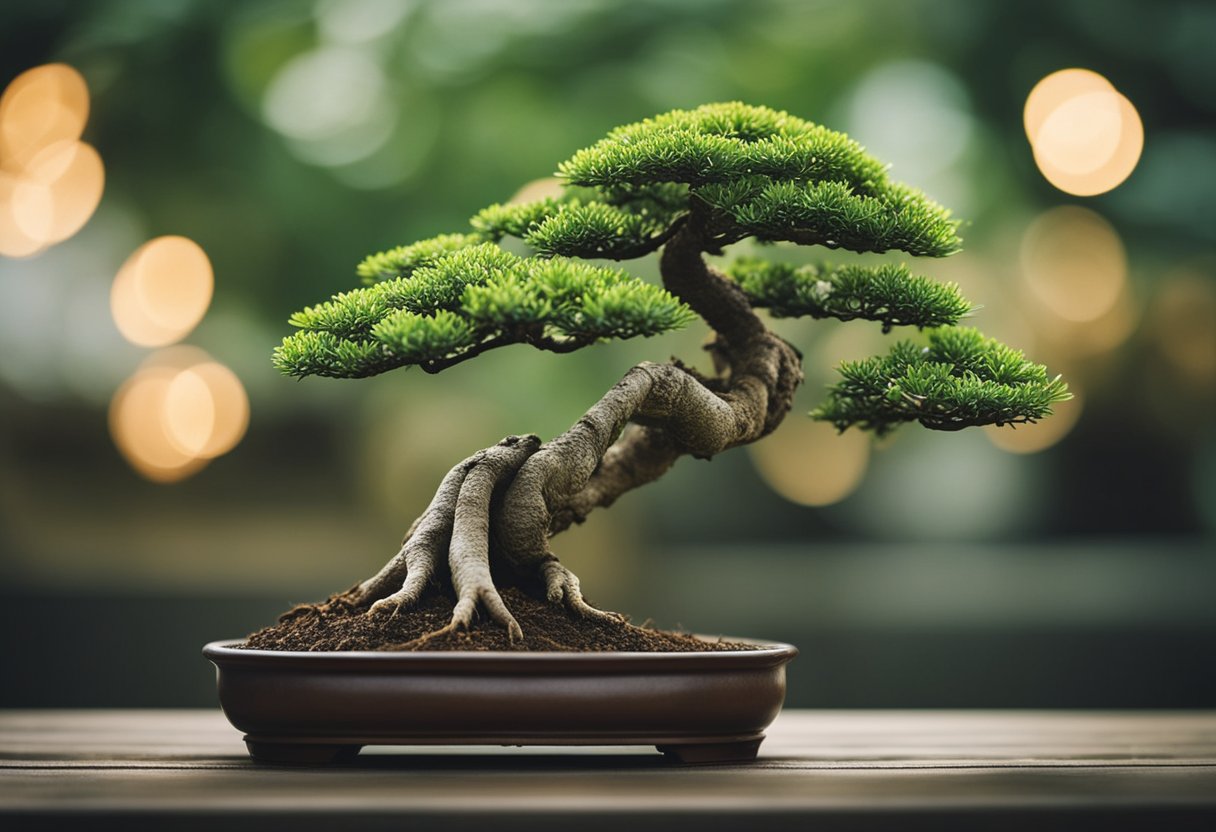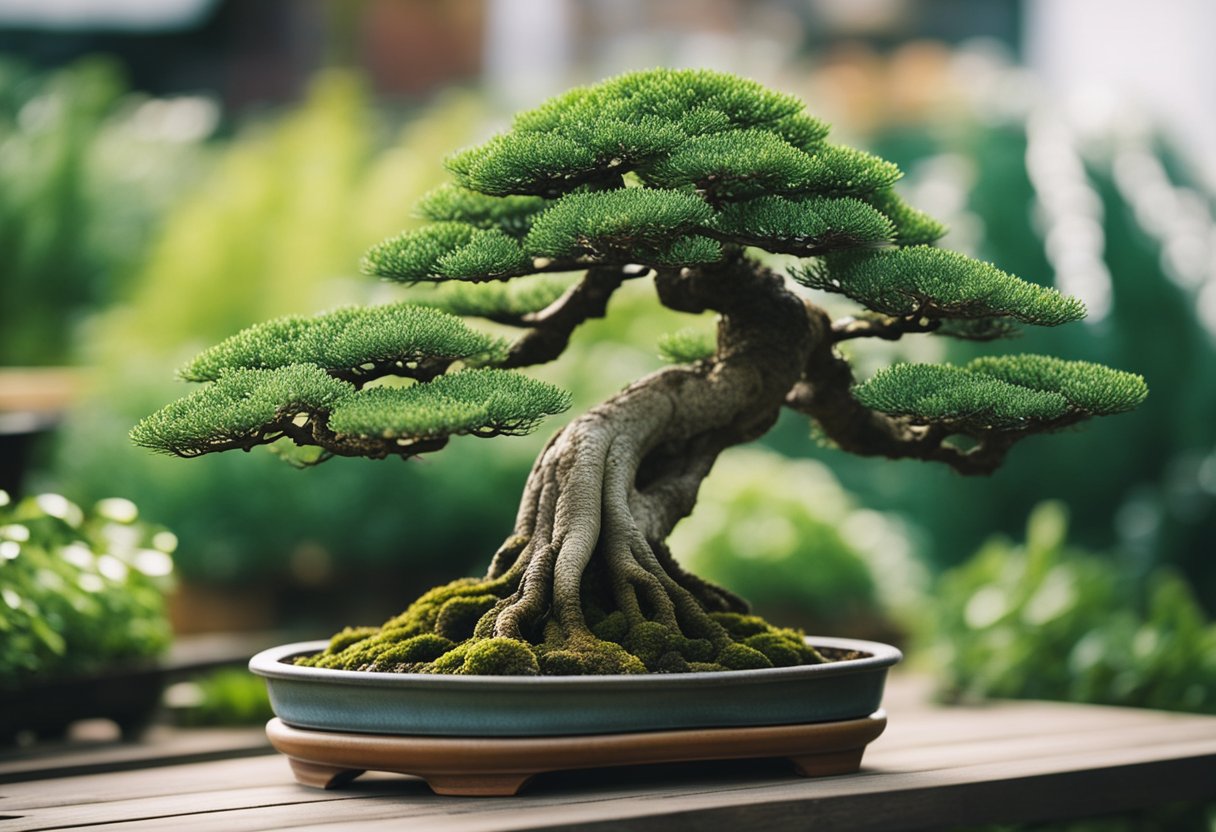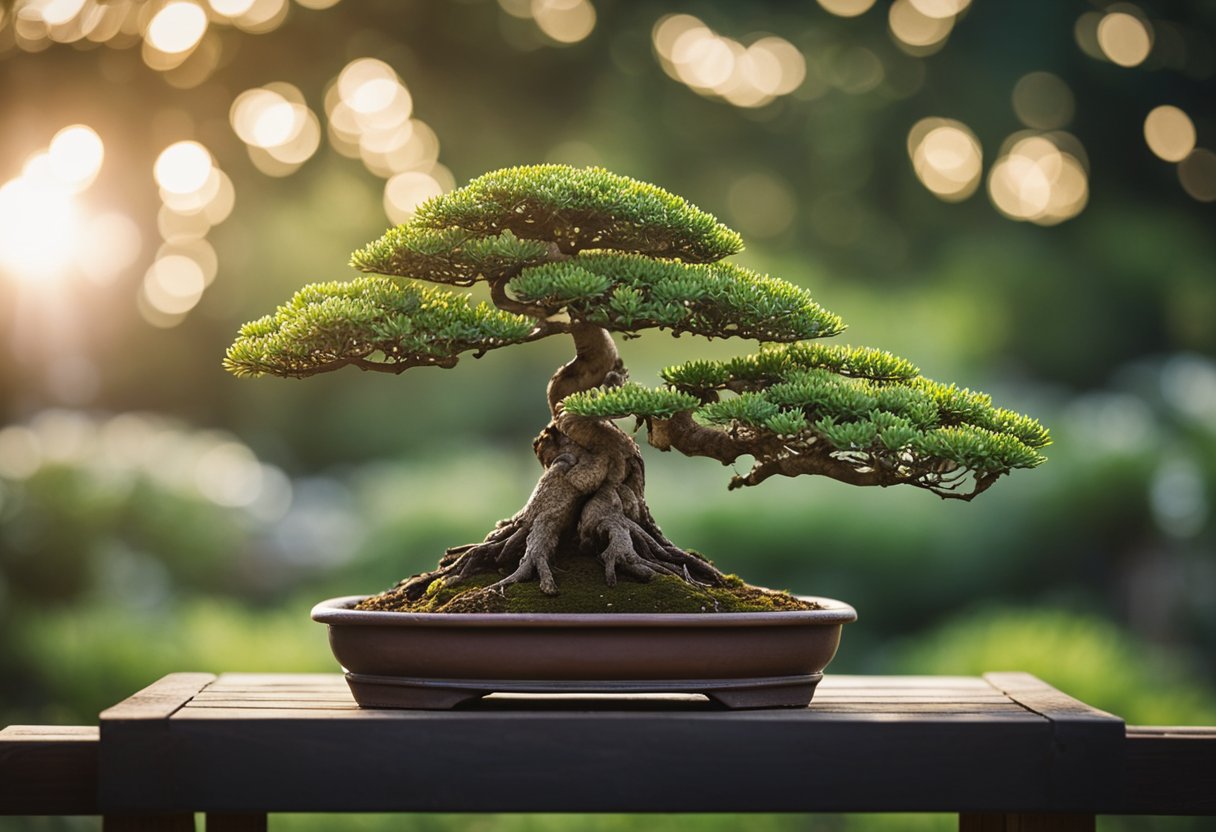How Do Bonsai Trees Stay Small: Understanding the Techniques and Principles Behind Bonsai Cultivation
Bonsai trees are a fascinating and beautiful art form that has been around for centuries. The appeal of these tiny trees lies in their ability to stay small, despite being a miniature version of a fully grown tree. But how do bonsai trees stay small?
This post may contain affiliate links, which means I’ll receive a commission if you purchase through my link, at no extra cost to you. Please read full disclosure here.

The answer lies in the specialized pruning and cultivation process that growers use to keep bonsai trees miniaturized. By regularly trimming the roots and branches and planting the tree in small containers, growers can limit the growth of the tree while mimicking the appearance of a fully grown tree. This process requires skill and patience, but the end result is a stunning work of art that can be enjoyed for years to come.
Maintaining a bonsai tree requires a certain level of dedication and knowledge. Pruning is an essential part of keeping the tree small, as it encourages denser foliage and produces a miniature canopy effect. Maintaining the shape of the tree through regular trimming of small sticks and branches is also crucial. Additionally, keeping the tree in a small pot and providing it with the right amount of water and fertilizer can help keep it small and healthy.
Understanding Bonsai Trees

Bonsai trees are miniature trees that are cultivated to mimic the appearance of fully grown trees. They have captured the attention and hearts of people around the world with their intricate designs and small size. Bonsai trees stay small by undergoing a specialized pruning and cultivation process. The roots and branches are regularly trimmed, and the tree is often planted in small containers to limit growth. These practices keep the bonsai miniaturized while mimicking the appearance of a fully grown tree.
History and Art of Bonsai
Bonsai is a Japanese art form that originated in China over a thousand years ago. It involves growing and shaping miniature trees in small containers. The art of bonsai was introduced to Japan in the 12th century and has since become a popular hobby around the world. Bonsai trees are often used in Japanese tea ceremonies and are considered a symbol of peace, harmony, and balance.
Bonsai Species and Varieties
There are many different species of trees that can be used for bonsai cultivation. Some of the most popular species include ficus, junipers, and Chinese elm. Ficus bonsai trees are known for their glossy leaves and are easy to care for, making them a popular choice for beginners. Juniper bonsai trees are known for their rugged appearance and can be shaped into a variety of styles. Chinese elm bonsai trees are known for their delicate leaves and are often used for formal upright styles.
In conclusion, bonsai trees are a fascinating art form that requires patience, skill, and dedication. By understanding the history and art of bonsai and the different species and varieties available, enthusiasts can cultivate beautiful miniature trees that capture the essence of nature.
Bonsai Size and Growth

Bonsai trees are known for their small size, which is achieved through careful cultivation and maintenance. There are several factors that contribute to the small size of bonsai trees, including genetics, pruning, and root system maintenance.
Genetics and Growth
The species of tree that is chosen for bonsai cultivation can have a significant impact on its ultimate size. Some species naturally grow more slowly and stay smaller, making them ideal for bonsai cultivation. Other species may grow quickly and require more frequent pruning to maintain their small size.
Pruning and Maintenance
Pruning is a critical component of bonsai cultivation and is necessary to keep the tree small and well-proportioned. There are two main types of pruning: maintenance pruning and structural pruning. Maintenance pruning involves trimming small sticks and branches to maintain the shape of the tree. Structural pruning involves more significant cuts to the tree’s branches to shape its growth and encourage a specific form.
Root System and Pruning
The root system of a bonsai tree is also essential for controlling its growth and size. Bonsai trees are grown in restrictive containers, which limit the space available for root growth. This restriction helps keep the tree small and encourages the growth of a dense root system. Root pruning is also necessary to keep the tree small and healthy. Root pruning involves trimming the tree’s roots to prevent them from becoming too long or tangled, which can cause the tree to become unhealthy.
In summary, bonsai trees stay small through a combination of genetics, pruning, and root system maintenance. Careful cultivation and maintenance are necessary to keep the tree small and healthy. By following best practices for bonsai cultivation, growers can create beautiful and healthy small bonsai trees.
Bonsai Cultivation Techniques
Bonsai cultivation techniques involve a combination of practices that help keep the trees small and healthy. These techniques include potting and repotting, defoliation and wiring, and watering and fertilizing.
Potting and Repotting
Potting and repotting are essential techniques in bonsai cultivation. Bonsai trees are grown in shallow containers, which restrict the growth of the roots and keep the tree small. The size of the pot is critical as it affects the growth and health of the tree. A shallow pot will limit the growth of the roots and keep the tree small.
Repotting is necessary to maintain the health of the tree. It involves removing the tree from the pot, trimming the roots, and repotting it in fresh soil. The frequency of repotting depends on the size of the pot and the growth rate of the tree.
Defoliation and Wiring
Defoliation and wiring are techniques used to shape and style the tree. Defoliation involves removing the leaves from the tree, which stimulates new growth and increases the density of the foliage. Wiring is the process of bending and shaping the branches of the tree to create the desired shape.
These techniques must be used with care as they can damage the tree if not done correctly. Defoliation should only be done during the growing season, and wiring should be done when the tree is dormant.
Watering and Fertilizing
Watering and fertilizing are critical to the health of the tree. Bonsai trees require regular watering, but overwatering can lead to root rot and other issues. The frequency of watering depends on the size of the pot, the type of soil, and the climate.
Fertilizing is necessary to provide the tree with the nutrients it needs to grow and stay healthy. Bonsai trees require a balanced fertilizer that provides the right amount of nitrogen, phosphorus, and potassium. The frequency of fertilizing depends on the type of fertilizer and the growth rate of the tree.
In conclusion, bonsai cultivation techniques involve a combination of practices that keep the tree small and healthy. Potting and repotting, defoliation and wiring, and watering and fertilizing are all critical to the success of bonsai cultivation. By using these techniques, growers can create beautiful and healthy bonsai trees that will last for years to come.
Bonsai Tree Health and Aesthetics
Sunlight and Photosynthesis
Bonsai trees require sunlight to perform photosynthesis and produce food. Without adequate sunlight, the tree will not be able to produce enough food to sustain growth. Therefore, it is important to place the bonsai tree in a location that receives sufficient sunlight. However, it is also important to avoid placing the tree in direct sunlight for extended periods of time, as this can cause leaf burn and damage the tree.
Bonsai Tree Health
Maintaining the health of a bonsai tree is crucial to keeping it small and compact. One way to ensure the health of the tree is to use appropriate soil and fertilizers. Bonsai soil is designed to provide the tree with the necessary nutrients and drainage while also restricting root growth. Additionally, regular pruning and trimming of the tree’s branches and roots will help maintain its health and prevent overgrowth.
Design and Shape
The aesthetic appeal of a bonsai tree is largely determined by its design and shape. To achieve a desired design, bonsai artists use techniques such as wiring, pruning, and shaping to control the growth of the tree. One important aspect of bonsai design is the development of small leaves and compact branches, which can be achieved through a process called ramification. Ramification involves the pruning and shaping of the tree’s branches to encourage the growth of smaller branches and leaves.
Overall, maintaining the health and aesthetics of a bonsai tree requires careful attention to its sunlight, soil, and design. By using appropriate techniques and practices, bonsai artists can create beautiful and healthy trees that remain small and compact. Additionally, bonsai trees provide benefits such as improved air quality through oxygen production, making them a great addition to any indoor or outdoor space.
Common Bonsai Tree Types
Bonsai trees come in a wide variety of species, each with its own unique characteristics and requirements. Here are some of the most common types of bonsai trees:
Indoor Bonsai Trees
Indoor bonsai trees are a popular choice for those who want to enjoy the beauty of bonsai trees in their homes or offices. These trees are typically smaller and more compact than outdoor bonsai trees, and they are also more tolerant of lower light levels and drier air.
One of the most popular indoor bonsai trees is the Ficus, which is known for its glossy green leaves and ability to thrive in a variety of conditions. Other popular indoor bonsai trees include the Chinese Elm, which has a beautiful, gnarled trunk and delicate leaves, and the Juniper, which is known for its rugged, outdoor appearance.
Coniferous Bonsai Trees
Coniferous bonsai trees are a type of bonsai tree that includes a variety of evergreen trees, such as pine, spruce, and cedar. These trees are known for their beautiful, needle-like leaves and their ability to withstand cold temperatures and harsh weather conditions.
One of the most popular coniferous bonsai trees is the Juniper, which is known for its rugged, outdoor appearance and its ability to thrive in a variety of conditions. Other popular coniferous bonsai trees include the Pine, which has a beautiful, textured bark and delicate needles, and the Spruce, which is known for its striking blue-green foliage and its ability to withstand harsh winter weather.
No matter which type of bonsai tree you choose, it’s important to remember that each tree has its own unique requirements and care needs. With the right care and attention, however, bonsai trees can be a beautiful and rewarding addition to any home or garden.
Price and Value of Bonsai Trees
Bonsai trees can vary greatly in price depending on the species, age, and quality of the tree. Generally, the more mature and well-trained the tree is, the higher its price will be. Prices can range from a few dollars for a small starter tree to thousands of dollars for a rare and well-trained specimen.
When considering the price of a bonsai tree, it is important to also consider its value. A well-trained and healthy bonsai tree can bring years of enjoyment and beauty to its owner. It can also be a valuable piece of art and a symbol of patience and dedication.
It is important to note that the price of a bonsai tree does not always reflect its quality or value. Some trees may be overpriced due to their rarity or marketing hype, while others may be undervalued due to their less popular species or lack of training.
When purchasing a bonsai tree, it is important to do research and buy from a reputable dealer. It is also important to consider the long-term cost of maintaining the tree, including the cost of tools, soil, and fertilizer.
Overall, while the price of a bonsai tree can vary greatly, its true value lies in the joy and satisfaction it brings to its owner.